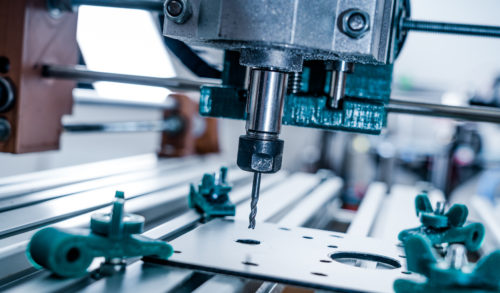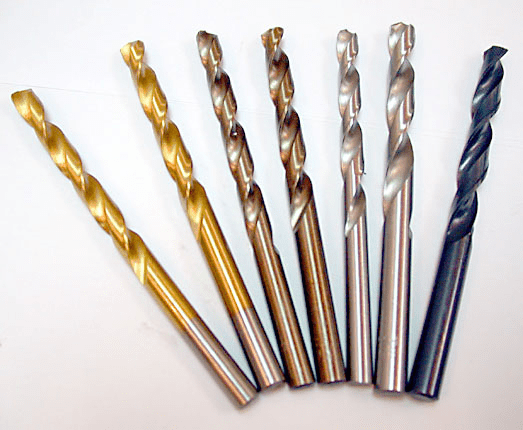Table of Contents
- How to Drill Small Holes in Aluminum CNC?
- Frequently Asked Questions
- What type of drill bit should I use for aluminum CNC?
- What are some tips for drilling small holes in aluminum CNC?
- How do I prevent the aluminum CNC from overheating during drilling?
- What are some common mistakes to avoid when drilling small holes in aluminum CNC?
- How do I ensure accuracy when drilling small holes in aluminum CNC?
Are you looking to drill small holes in aluminum CNC but don’t know where to start? Don’t worry, you’re not alone. Drilling small holes in aluminum CNC can be a daunting and challenging task, especially if you don’t have the right tools and techniques. However, with the right guidance and knowledge, you can easily master this skill and achieve the results you desire.
In this article, we’ll take you through the step-by-step process of drilling small holes in aluminum CNC. From choosing the right drill bit to setting up your machine and executing the drilling process, we’ve got you covered. So, let’s dive in and discover how to drill small holes in aluminum CNC like a pro!
How to Drill Small Holes in Aluminum CNC?
Drilling small holes in aluminum CNC requires precision and accuracy. This process is essential for creating intricate designs and patterns. In this article, we will provide you with step-by-step instructions on how to drill small holes in aluminum CNC.
Step 1: Choose the Right Drill Bit
Choosing the right drill bit is crucial for drilling small holes in aluminum CNC. You need a drill bit that is sharp and has a small diameter. A dull drill bit can cause the aluminum to overheat and damage the CNC machine.
It is best to use a carbide drill bit, as it is durable and can withstand the high speed and pressure required for drilling. You can also use a cobalt drill bit, which is designed for drilling through tough materials like aluminum.
Step 2: Secure the Aluminum Sheet
Before drilling, you need to secure the aluminum sheet to the CNC machine. This will prevent the sheet from moving or vibrating during the drilling process, which can cause inaccuracies.
You can use clamps or double-sided tape to secure the sheet to the machine. Make sure the sheet is level and flat to ensure accurate drilling.
Step 3: Set the Drill Speed
The drill speed is an important factor when drilling small holes in aluminum CNC. You need to set the drill speed according to the diameter of the drill bit and the thickness of the aluminum sheet.
A slower speed is recommended for smaller drill bits, while larger drill bits require higher speeds. It is important to maintain a consistent speed throughout the drilling process to prevent overheating and damage to the CNC machine.
Step 4: Apply Lubrication
Applying lubrication to the drill bit and aluminum sheet is essential for smooth and efficient drilling. Lubrication helps to reduce friction and heat buildup during the drilling process.
You can use a cutting fluid or a lubricant spray for this purpose. Apply the lubrication to the drill bit and the area to be drilled before starting the drilling process.
Step 5: Begin Drilling
Once you have completed the previous steps, you are ready to begin drilling. Start with a small pilot hole and gradually increase the diameter of the hole.
Make sure to drill straight and avoid applying too much pressure, as this can cause the drill bit to break or damage the CNC machine. Take breaks and remove the aluminum shavings to prevent overheating.
Step 6: Clean the Aluminum Sheet
After drilling, you need to clean the aluminum sheet to remove any debris or shavings. Use a soft cloth or brush to clean the surface of the sheet.
You can also use compressed air to blow away any remaining debris. This will ensure that the sheet is ready for further processing or use.
Benefits of Drilling Small Holes in Aluminum CNC
Drilling small holes in aluminum CNC has several benefits. It allows for the creation of intricate designs and patterns, which can be used for various applications.
It also enables the use of lightweight and durable aluminum sheets, which are ideal for industries such as aerospace, automotive, and electronics.
Drilling Small Holes in Aluminum CNC vs. Other Methods
Drilling small holes in aluminum CNC is a more precise and efficient method compared to other methods such as manual drilling or punching.
Manual drilling is time-consuming and requires a high level of skill, while punching can cause deformation and damage to the aluminum sheet.
In Conclusion
Drilling small holes in aluminum CNC requires proper technique and equipment. By following the steps outlined in this article, you can achieve precise and accurate results.
Remember to choose the right drill bit, secure the aluminum sheet, set the drill speed, apply lubrication, drill straight, and clean the sheet after drilling.
With these tips, you can create intricate designs and patterns, and take advantage of the benefits of using lightweight and durable aluminum sheets in various industries.
Frequently Asked Questions
Aluminum CNC drilling can be a tricky task to perform, especially when dealing with small holes. However, with the right tools and techniques, it can be done with ease. Here are some frequently asked questions about how to drill small holes in aluminum CNC.
What type of drill bit should I use for aluminum CNC?
When drilling small holes in aluminum CNC, it is recommended to use high-speed steel (HSS) drill bits. These bits are designed to withstand the high speeds and temperatures that aluminum CNC drilling requires. They are also harder and more wear-resistant than other types of drill bits, making them ideal for this task.
It is also important to choose the right size drill bit for the job. For small holes, use a bit that is slightly larger than the diameter of the hole you need. This will allow for the bit to cut cleanly and prevent it from binding or breaking.
What are some tips for drilling small holes in aluminum CNC?
When drilling small holes in aluminum CNC, it is important to use the right technique to ensure a clean and accurate hole. One tip is to use a center punch to mark the spot where you want to drill. This will help prevent the drill bit from wandering and ensure that your hole is in the right location.
Another tip is to start with a small pilot hole before drilling the final size. This will help guide the larger bit and prevent it from wandering or breaking. It is also important to use a lubricant, such as cutting oil or WD-40, to reduce heat and friction during the drilling process.
How do I prevent the aluminum CNC from overheating during drilling?
Overheating is a common problem when drilling aluminum CNC, especially when using high speeds and feeds. To prevent overheating, it is important to use a lubricant to reduce friction and heat. This will also help extend the life of your drill bit and prevent it from breaking or dulling prematurely.
Another way to prevent overheating is to use a slower speed and feed rate when drilling. This will allow the drill bit to cut more slowly and reduce the amount of heat generated. It is also important to keep the drill bit and aluminum CNC cool by using a coolant or compressed air to blow away chips and debris.
What are some common mistakes to avoid when drilling small holes in aluminum CNC?
One common mistake when drilling small holes in aluminum CNC is using too much pressure or force. This can cause the drill bit to bind or break, and can also damage the aluminum CNC. It is important to use a light touch and let the drill bit do the work.
Another mistake is using the wrong type of drill bit or size. This can result in an inaccurate or uneven hole, or even damage to the aluminum CNC. Always use the right type of bit and size for the job, and take the time to properly set up and prepare for the drilling process.
How do I ensure accuracy when drilling small holes in aluminum CNC?
Ensuring accuracy when drilling small holes in aluminum CNC requires careful planning and execution. One way to ensure accuracy is to use a center punch to mark the spot where you want to drill. This will help guide the drill bit and prevent it from wandering or drifting.
Another way to ensure accuracy is to use a drill press or milling machine. These tools provide precise control over the drilling process and can help ensure that your holes are straight and accurate. It is also important to use the right size and type of drill bit, and to take your time to carefully drill each hole.
In conclusion, drilling small holes in aluminum CNC can be a challenging task, but with the right tools and techniques, it can be done accurately and efficiently. To achieve the best results, it is important to select the appropriate drill bit size and type, use a lubricant to reduce friction and heat, and maintain a consistent speed and pressure while drilling.
It is also important to properly secure the aluminum CNC to prevent any movement during drilling, which can affect the accuracy of the holes. By following these tips and taking the necessary safety precautions, you can successfully drill small holes in aluminum CNC and achieve the desired results for your project.
Remember to always wear protective gear such as safety glasses and gloves, and to consult with a professional if you are unsure about any aspect of the drilling process. With practice and patience, you can become proficient in drilling small holes in aluminum CNC and take your projects to the next level.
Request a quote today!
[contact-form-7 id="1578" title="Contact form"]
Please compress the file into a ZIP or RAR file before uploading. Alternatively, send through your RFQ by email.
enquires@unitymanufacture.com





